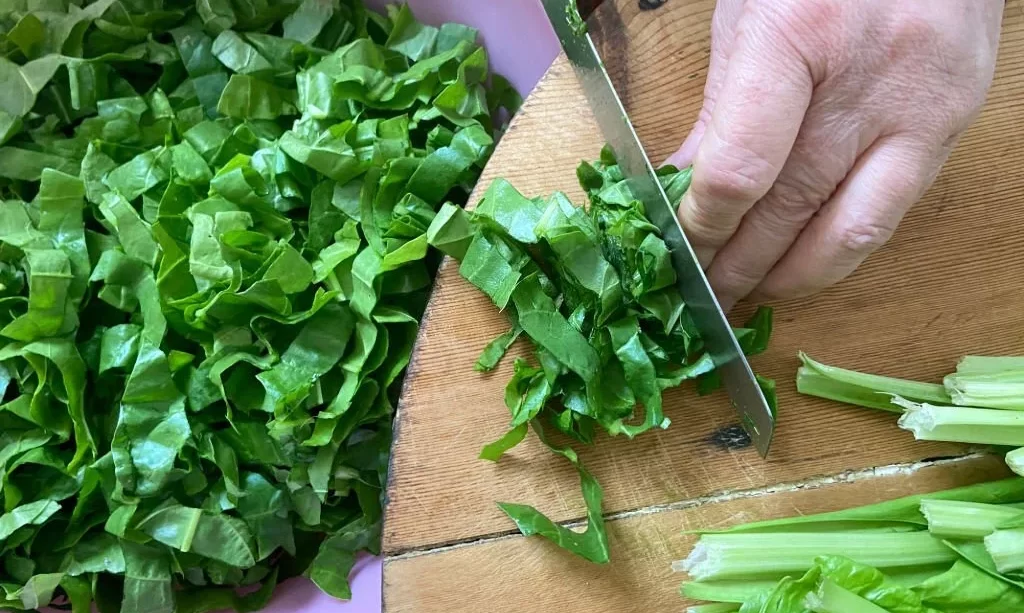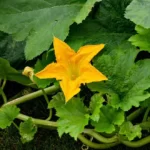Swiss chard, with its vibrant, rainbow-hued stems and lush, leafy greens, is a garden favorite that’s as nutritious as it is visually appealing. Whether you’re a seasoned gardener or just starting out, understanding when and how to harvest Swiss chard is a crucial skill to ensure a continuous supply of this versatile leafy green. A well-timed harvest not only ensures the freshest and most tender leaves for your culinary creations but also promotes the plant’s continued growth and productivity. In this comprehensive guide, we’ll explore the art of cutting Swiss chard, starting with the essential knowledge of when to harvest this garden gem. So, sharpen your shears and let’s embark on a journey to become Swiss chard harvesting experts.
- Rainbow Swiss Chard Live Plants 4 Inc Pot for Planting Outdoors, Easy to Plant Not Seeds High Yields
Knowing When to Harvest Swiss Chard
Before we dive into the nitty-gritty of harvesting Swiss chard, it’s essential to grasp the timing of this process. Knowing when to pick your Swiss chard is key to enjoying the best flavor and nutritional value while encouraging the plant to produce a bountiful harvest.
Swiss chard is at its prime for harvesting when the leaves are young and tender. Generally, you can start harvesting Swiss chard when the leaves reach a length of approximately 6 inches (15 centimeters). At this stage, they are bursting with flavor and packed with nutrients, making them a delectable addition to your dishes.
Regular harvesting of Swiss chard is not only about reaping the rewards for your kitchen but also about promoting the plant’s vitality. By snipping off the outer leaves carefully, you encourage the plant to continue producing fresh growth from the center, extending the harvest season. However, be mindful not to wait too long before harvesting, as older leaves can become tough and bitter.
Throughout the growing season, you’ll have multiple opportunities to harvest Swiss chard. Young leaves can be picked as soon as they reach the desired size, typically every 2-3 weeks. As the plant matures, continue to harvest the outer leaves, allowing the inner leaves to flourish and contribute to the plant’s overall health. In this way, you can savor the delightful taste of Swiss chard while ensuring a thriving garden full of this vibrant leafy green.
Essential Tools for Cutting Swiss Chard
Before you embark on the satisfying task of cutting Swiss chard, it’s essential to gather the right tools and equipment. Having the correct tools on hand will not only make the process more efficient but also ensure clean cuts that promote the plant’s health. Here are the essential tools you’ll need:
- Garden Shears or Scissors: Invest in a pair of sharp garden shears or scissors specifically designed for cutting plants. These tools provide clean cuts, minimizing damage to the Swiss chard.
- Harvesting Basket or Container: You’ll need a container to collect the harvested Swiss chard leaves. A harvesting basket or a bucket works well for this purpose. Make sure it’s clean and large enough to accommodate your harvest.
- Gloves (Optional): While not strictly necessary, wearing gardening gloves can protect your hands from thorns or any rough plant surfaces, especially if you’re harvesting other crops alongside Swiss chard.
Ensure that your shears or scissors are clean and sharp before starting to cut Swiss chard. Dull or dirty tools can tear the leaves, which may damage the plant and lead to a less appealing harvest.
- Make Pruning Work Easier: Rust-resistant stainless steel blade are sharp and durable for easy and smooth cut.Anti-slip and ergonomic handle make the gardener clippers more comfortable in your hand.Easy-open spring action reduces hand fatigue while cutting. you can easily to cut without damaging the vital stems and branches of your plants
- User-friendly Safety Lock: These garden shears have locking mechanisms to keep the sharp blades securely closed when not in use.It is easy to maneuver and can effectively reduce accidental injuries. And the closing mechanism is firmly enough, you don’t need to worry the plant pruning shears will get locked accidentally during use
- Garden Gloves for Hand Protection: One size fits most. This Gardening gloves,made of soft & comfortable cotton fabric,can protect yourself from dirt, skin wounds and nasty splinters when doing yard chores. The grip latex coating provides anti-slip or sure control when grabbing garden & yard tools
- Widely Used: This gardening shears set comes with 3 different blades for a variety of general pruning tasks.It is ideal for harvesting or trimming herbs,flowers,house plants, hydroponics,bonsai,cutting stems or light branches,or other cutting needs in the garden. It would also be a perfect gift for a gardening friend
- Customer support: Please feel free to tell us if you have any questions about our garden shears pruning. Note:Keeping your pruner shears cleaned and well-oiled can extend their lifespan. Please dry and clean it after use. Note: The colors of the garden pruners and gloves will be shipped at random
Step-by-Step Guide to Cutting Swiss Chard
Cutting Swiss chard is a straightforward process that requires precision and care to maintain the plant’s health. Here’s a step-by-step guide to cutting Swiss chard leaves effectively:
- Approach the Swiss Chard Plant: When you’re ready to harvest, approach the Swiss chard plant with your tools and harvesting container in hand.
- Identify the Leaves for Harvest: Examine the plant and identify the outer leaves that are ready for harvest. These leaves should be at least 6 inches (15 centimeters) long.
- Hold the Base Gently: Grasp the base of the selected Swiss chard leaf gently but firmly between your fingers.
- Position Your Shears or Scissors: With your other hand, hold your garden shears or scissors and position them at the base of the leaf, near the stem.
- Make a Clean Cut: Make a clean, angled cut with your shears or scissors. Ensure that the cut is smooth and even, avoiding any tearing or jagged edges.
- Repeat for Each Leaf: Continue this process for each leaf you wish to harvest, leaving the inner leaves untouched. It’s essential to cut selectively, allowing the plant to continue growing from its center.
By following these steps, you’ll be able to harvest Swiss chard leaves with precision, leaving the plant healthy and vibrant, ready to provide you with a continuous supply of fresh greens.
Caring for the Swiss Chard Plant After Cutting
After you’ve completed the harvest, it’s essential to provide proper care to the Swiss chard plant to ensure its continued health and productivity. Here’s how to care for your Swiss chard plant after cutting:
- Watering: Give the plant a good drink of water to help it recover from the stress of harvesting. Swiss chard benefits from consistently moist soil.
- Fertilizing: Consider applying a balanced liquid fertilizer to the plant. This can provide the nutrients needed to support regrowth and ensure the plant remains vigorous.
- Monitoring for Pests and Diseases: Keep a close eye on the Swiss chard plant for signs of pests or diseases. Early detection and intervention can prevent issues from spreading and damaging the plant.
Taking these post-harvest care steps will help ensure that your Swiss chard plant continues to thrive and provide you with a bountiful harvest throughout the growing season.
- Miracle-Gro Shake ‘N Feed Tomato, Fruit & Vegetable Plant Food feeds plants for up to 3 months, and nourishes above and below the soil
- This plant food contains calcium to help form stronger walls, producing better quality and longer-lasting fruits and vegetables
- For use with vegetable, fruit, and tomato plants, whether in-ground or indoor or outdoor container plants
- Apply this garden product evenly onto the soil and work into the top 1-3 inches of soil for in-ground plants, or lightly work into the soil of established container plants; water to start feeding
- Reapply Miracle-Gro Shake ‘N Feed Tomato, Fruit & Vegetable Plant Food every 3 months and water regularly for a beautiful garden all season long
Extending the Harvest Season
Extending the Swiss chard harvest season can be a rewarding endeavor, allowing you to enjoy this nutritious green for an extended period. Here are some tips for prolonging your Swiss chard harvest:
- Regular Harvesting: Continue to harvest Swiss chard regularly, even as the plant matures. By snipping off the outer leaves, you encourage the growth of new, tender leaves from the center.
- Shade in Extreme Heat: Swiss chard is a cool-season crop, and it may struggle in extremely hot weather. Provide partial shade during the hottest parts of the day to protect the plant from scorching sun.
- Row Covers: Using row covers can help extend the Swiss chard growing season. These covers create a microclimate that is slightly cooler and can shield the plant from temperature extremes.
By employing these strategies, you can enjoy Swiss chard for an extended period, making the most of this versatile and nutritious leafy green.
Storing and Using Harvested Swiss Chard
Once you’ve harvested Swiss chard, it’s essential to handle and store it correctly to maintain its freshness and flavor. Here’s what to do:
- Rinse and Dry: After harvesting, gently rinse the Swiss chard leaves under cool, running water to remove any dirt or debris. Pat them dry with a clean towel or use a salad spinner.
- Storage: Place the Swiss chard leaves in a sealed plastic bag or an airtight container. Squeeze out excess air to prevent moisture buildup.
- Refrigeration: Store the bag or container in the refrigerator’s vegetable crisper drawer, where the temperature is slightly cooler and humidity is higher.
- Usage: Use Swiss chard within a few days for the best flavor and quality. You can incorporate it into salads, stir-fries, soups, or sauté it with garlic and olive oil as a delicious side dish.
By following these storage and usage guidelines, you can enjoy the freshness and flavor of Swiss chard for several days after harvest.
- EXTRA LARGE CAPACITY: KITHELP 28 pieces food storage containers capacity is much larger than its competitors.Include 14 containers with 14 lids.11 sizes fulfill all your needs. (2) 6 rectangular containers (2x54oz , 2x34oz , 2x17oz); (3) 4 square containers(71oz ,44oz,27oz,14oz); (2) 4 round containers(54oz , 37oz , 22oz , 11.8oz)
- BPA FREE & FOOD GRADE MATERIALS: Our BPA free freezer containers for food are made of food-grade PP and silicone materials, PVC-free, lead-free, chloride-free & BPA free, safe and healthy
- FREEZER, MICROWAVE & DISHWASHER SAFE: Easy snap lock containers for food are freezer safe and dishwasher safe. This airtight storage containers are microwave safe.[Tips]Please do not put the lid in the dishwasher & microwave.Temperature resistant -20℃ to 120℃
- AIRTIGHT & LEAKPROF: With 4 sides locking lids and silicone sealing, our kitchen containers storage set are super airtight and leak-proof. Each box has a corresponding size lid. Make sure the lid is aligned with the edges of the box when closing the lid
- STACKABLE DESIGN & PORTABLE: With the stackable design, our plastic storage containers can maximize the use of your kitchen and pantry. Your kitchen and pantry will be more organized and clean. It is portable that you can take it with you to office or outdoors or anywhere you like
Conclusion
Harvesting Swiss chard is not just about plucking leaves from a plant; it’s about savoring the fruits of your labor and nurturing a thriving garden. As you’ve learned in this comprehensive guide, timing your harvest, using the right tools, and caring for the plant are all vital aspects of the process.
Swiss chard’s versatility in the kitchen makes it a delightful addition to a wide range of dishes, from salads to sautés. Its rich nutritional content, including vitamins, minerals, and antioxidants, ensures that your culinary creations are as healthy as they are delicious.
Whether you’re a seasoned gardener or a newcomer to the world of Swiss chard, may your future harvests be bountiful, your meals flavorful, and your garden a source of joy. As you continue to experiment with Swiss chard in your recipes, you’ll not only nourish your body but also cultivate a deeper connection to the art of gardening and the pleasures of homegrown produce.







